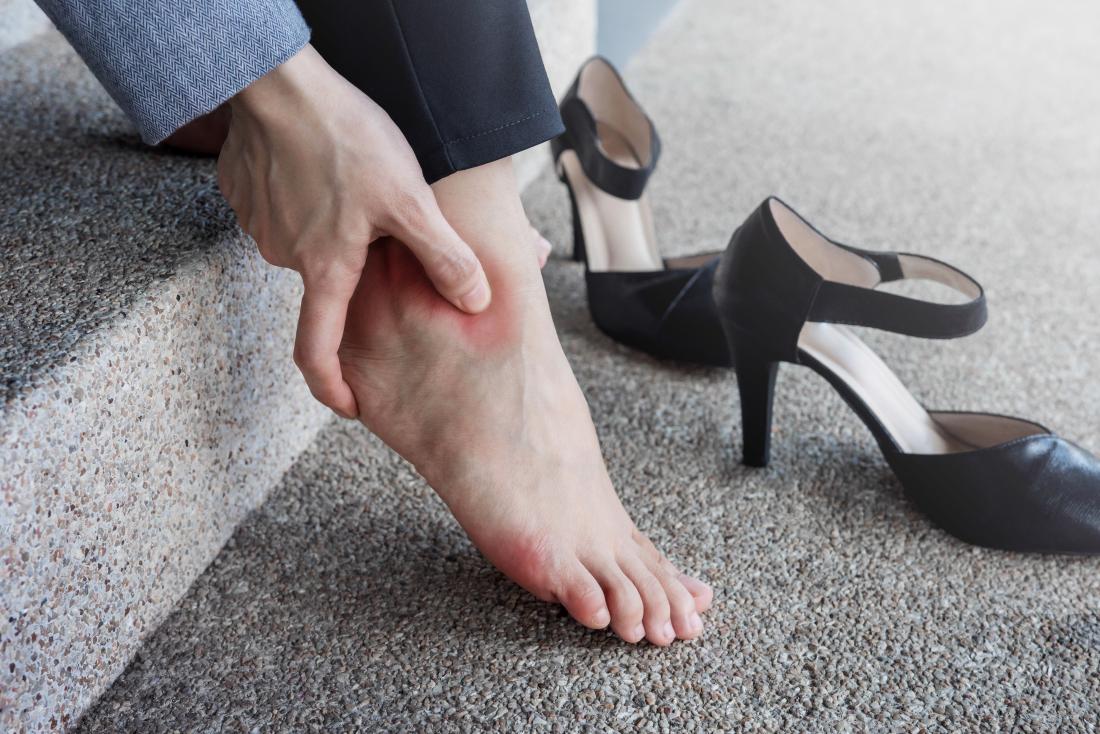After a night’s slumber, do you wake up with a stabbing heel pain? Do you feel pain after physical activity that lasts for a few days? Or are your heels simply sore?
You put a lot of strain on your feet every day. As a result, aches and pains are quite common. However, if the pain comes and goes or lingers for an extended time – there could be something else. And every case of heel pain has one thing in common: it’s a signal that your heel needs to heal.
Continue reading to find out what the most prevalent causes of heel pain are and when you should seek medical assistance.
1. Plantar fasciitis
Plantar fasciitis occurs due to inflammation or damage to the plantar fascia, a ligament that runs along the sole of your foot and connects to your heel. This problem is frequently caused by repetitive movements or anything that places a lot of strain on your foot’s arch.
Pain from plantar fasciitis can occur at any time. Heel pain can occur during or after activity or after being on your feet for an extended time. If you get a strong stabbing pain in the arch of your foot or the bottom of your heel after walking or other exercise, your heels are likely to suffer. This indicates that the plantar fascia is irritated or injured due to overuse and should be rested and cared for.
You can go to the heel pain specialist or podiatrist, but some at-home treatments exist supportive footwear, rest, hot and cold therapy, and targeted stretches and exercises.
Even at home, avoid wearing bare feet. Going barefoot increases the strain on your feet.
A podiatrist could suggest a cortisone injection or surgery if your heel pain worsens or starts interfering with your everyday activities.
2. Achilles tendonitis
Achilles tendonitis may cause pain above your heel or at the rear of your ankle during and after physical activity.
This ailment occurs when the Achilles tendon becomes inflamed, usually due to overuse or a significant increase in the frequency or intensity of activity. This ailment is particularly common among runners.
You’ll probably feel a minor soreness that worsens with extended exertion. For example, you may feel pain or stiffness after a lengthy rest or exercise. However, simple movement or stretching during the day usually helps to alleviate the pain.
As with other overuse injuries, rest and avoiding or changing activities to lessen strain are usually the best treatments for Achilles tendinitis. However, you may require surgery if you have tiny rips in your Achilles tendon.
3. Haglund’s deformity
A bony growth on the back of the heel characterizes Haglund’s deformity. Haglund’s deformity is often known as the “pump bump” since it is common in people who wear high heels. Shoes with a hardback might also irritate the back of the heel.
Other symptoms of Haglund’s deformity include:
- Pain in the back of your heel where your Achilles tendon connects to your heel.
- The back of your heel is swollen.
- Redness and irritation of the skin on the back of your heel.
Investing in supportive shoes with soft backs is one of the best things you can do to ease pain. Over-the-counter anti-inflammatory medicines and icing your heel can also be beneficial.
However, it’s also a good idea to see a podiatrist, significantly since Haglund’s deformity can progress to another painful ailment known as bursitis.
4. Heel bursitis
Another cause of heel pain is heel bursitis. Bursitis is an inflammation of the bursa, a tiny sack of fluid cushions and lubricating places where tissues rub against each other. Bursae are found throughout your body, both within and outside of joints that are prone to friction and strain. There are two forms of heel bursitis:
- Subcalcaneal bursitis.
- Retrocalcaneal bursitis.
Bursitis therapies are similar to those used for other heel disorders. Consult a podiatrist if the discomfort persists or your heel becomes hot.
5. Plantar bone spurs
Long-term, repetitive straining of the ligaments that link your heel to your toes might result in a bone spur on your heel. These bony growths form while your foot attempts to mend itself.
Plantar bone spurs are relatively common, with around one in every ten persons suffering from one. However, only 5% of people suffer foot pain caused by bone spurs. If you have heel discomfort, it is most likely caused by another condition, such as plantar fasciitis. Plantar bone spurs are common in persons with plantar fasciitis.
